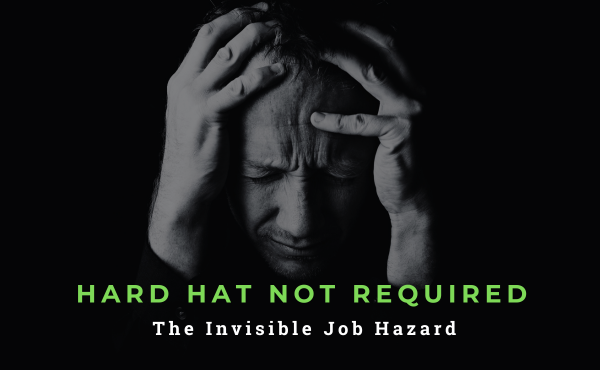HOW TO SELECT APPRENTICESHIP CANDIDATES DURING THE GREAT RESIGNATION

As the Great Resignation continues, job openings in the construction industry remains extremely high. Construction workers are quitting at a fast rate, retiring, and shifting to other industries. Unfilled job openings affect building of critical infrastructure.
Now is the time to get rid of the bad hiring habits we acquired during the past decade before they sink the union construction industry. We need to seriously reconsider recruitment and talent selection.
The key area to improvement is how we bring in apprentices. A huge effort is underway to get young people interested in our industry. Great. But I’m more interested in getting the right young people, because every new apprentice we accept will become a part of our union industry family for the next 25 to 30 years. We need to take selection much more seriously. To the extent we have standards for choosing apprenticeship candidates, they are often lax and informal.
The failure of unions and contractors to address this problem is a staggering head scratcher, especially when you consider the following:
- In most cases, unions and employers will spend anywhere from $40,000 to $100,000 over the course of four or five years to train a single apprentice.
- Anywhere from 10% to 40% of accepted apprentice candidates end up washing out. That amounts to tens of millions of dollars wasted on failing candidates every year.
- The threshold for acceptance into a fully paid apprenticeship program is low. There might be a math test or a short interview at some point, but that’s about it. In other words, we commit to spend several years (and six figures) training someone we know hardly anything about. Contrast this with how most colleges recruit students. Every candidate must take essay explaining why they deserve the opportunity to attend school –- and if they’re accepted, they (or more likely, their parents) are on the hook for four years of tuition!
- Contractors are usually not involved in selecting apprentices — the men and women they will end up hiring for the next 25 year. They sub out this crucial task to the unions. Really?!
- Union construction projects typically cost 15% to 25% more than nonunion jobs. Given this sizable delta, doesn’t it make sense to select only “Top-Gun” candidates for high-quality, cost-free apprenticeship by testing, evaluating, interviewing, and screening them to the extreme
Before I give a few recommendations on how to improve recruitment, I would like to provide a case study in best practices. Here is a stark example of what it takes to succeed in today’s high-stakes business world.
My daughter’s fiancé is a nerd — a really, really smart one. He is currently working for Google. His application process at Google has included 12 interviews and countless hard-ass problem-solving exercises. When he finally reached what they call the “hiring committee” stage, Google execs grinded through the “best of the best” to decide who gets hired. That’s how it’s done. That’s the discipline and requirement to be a world-class organization. Google owns the world’s intellectual capital market, and it doesn’t settle. Ever. And neither should we.
My suggestions are short and sweet. This temporary moment of industry contraction gives us a perfect opportunity to redesign recruitment from scratch. Let’s start by doing the following:
- Every candidate entering a union apprentice program should undergo extensive, fair and ranked testing and evaluation. If it’s good enough for colleges in the U.S., it’s good enough for us.
- Our evaluation process should be similar to ones used by police and fire departments. Each candidate should be interviewed for at least half an hour by a team of professionals — including union contractors.
- Apprentices who quit the program (not removed for cause) would be interviewed to find out what persuaded them to drop out. This information can be used to improve training and implement changes where necessary, ultimately saving hundreds of millions of dollars over the next decade.
The union construction industry can’t afford average candidates to become our foundation of talent. Not everyone deserves the “free ride” treatment that our world-class training programs provide. We need to take a more proactive approach and get contractors much more involved in the evaluation process. In today’s job seeker’s labor market, compromising on talent is still flat-out unacceptable. It’s all up to us to commit a new path forward.








Accurate Screening of Apprentices in Four Steps
A Realistic Job Preview
Start with a brief online video that explains a career in union construction. The video is helping people have the right understanding of :
- What it means to have a career in construction
- What to expect – an honest look at the good and the bad
- What the union expects of t
- What to expect – an honest look at the good and the bad
- What the union expects of them
Candidates Completes APS Success Profile
A 60-min online based test. The assessment evaluates candidates’ aptitude, personality, and cognitive capabilities related to a career in construction.
Your Program Receives Assessment Results Online
Assessment results are returned with easy-to-use “traffic light” indicators (green, yellow, and red) to group applicants by assessment score and mechanical reasoning capability.
Interviews are Held with Behavior Based Questions
Interview is based on a technique that research has shown to be 4x more effective at predicting success than traditional interviews.



